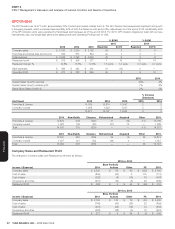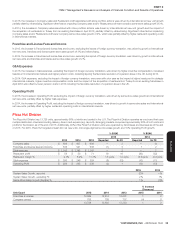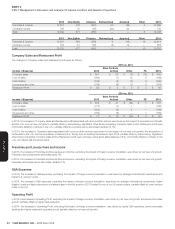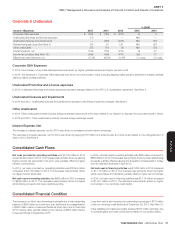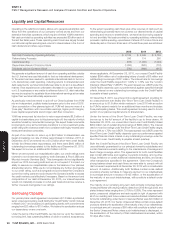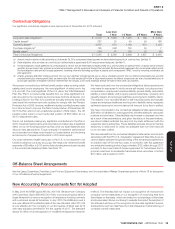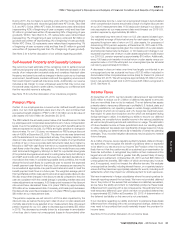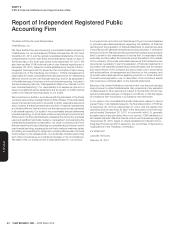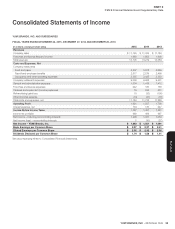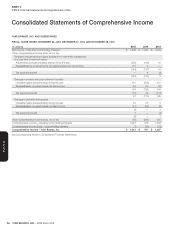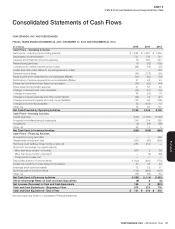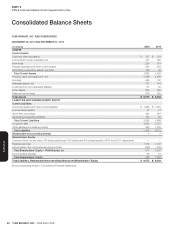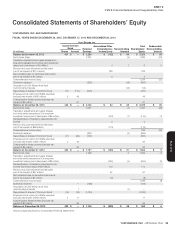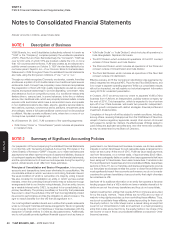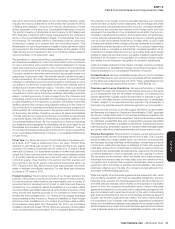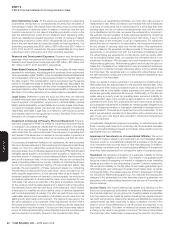Pizza Hut 2015 Annual Report Download - page 140
Download and view the complete annual report
Please find page 140 of the 2015 Pizza Hut annual report below. You can navigate through the pages in the report by either clicking on the pages listed below, or by using the keyword search tool below to find specific information within the annual report.
YUM! BRANDS, INC.-2015 Form10-K32
Form 10-K
PART II
ITEM7AQuantitative and Qualitative Disclosures About Market Risk
ITEM7A Quantitative and Qualitative Disclosures
About Market Risk
The Company is exposed to financial market risks associated with interest rates, foreign currency exchange rates and commodity prices. In the normal
course of business and in accordance with our policies, we manage these risks through a variety of strategies, which may include the use of financial
and commodity derivative instruments to hedge our underlying exposures. Our policies prohibit the use of derivative instruments for trading purposes,
and we have processes in place to monitor and control their use.
Interest Rate Risk
We have a market risk exposure to changes in interest rates, principally
in the U.S. We have attempted to minimize this risk and lower our overall
borrowing costs on a portion of our debt through the utilization of derivative
financial instruments, primarily interest rate swaps. These swaps were
entered into with financial institutions and have reset dates and critical
terms that match those of the underlying debt. Accordingly, any change
in fair value associated with interest rate swaps is offset by the opposite
impact on the related debt.
At December 26, 2015 and December 27, 2014 a hypothetical
100 basis-point increase in short-term interest rates would result, over the
following twelve-month period, in a reduction of approximately $14 million
and $5 million, respectively, in income before income taxes. The estimated
reductions are based upon the current level of variable rate debt and assume
no changes in the volume or composition of that debt and include no impact
from interest income related to cash and cash equivalents. In addition,
the fair value of our derivative financial instruments at December 26, 2015
and December 27, 2014 would decrease approximately $1 million and
$4 million, respectively, as a result of the same hypothetical 100 basis-point
increase and the fair value of our Senior Unsecured Notes at December 26,
2015 and December 27, 2014 would decrease approximately $119 million
and $182 million, respectively. Fair value was determined based on the
present value of expected future cash flows considering the risks involved
and using discount rates appropriate for the duration.
Foreign Currency Exchange Rate Risk
Changes in foreign currency exchange rates impact the translation of
our reported foreign currency denominated earnings, cash flows and net
investments in foreign operations and the fair value of our foreign currency
denominated financial instruments. Historically, we have chosen not to
hedge foreign currency risks related to our foreign currency denominated
earnings and cash flows through the use of financial instruments. We
attempt to minimize the exposure related to our net investments in
foreign operations by financing those investments with local currency
denominated debt when practical. In addition, we attempt to minimize the
exposure related to foreign currency denominated financial instruments
by purchasing goods and services from third parties in local currencies
when practical. Consequently, foreign currency denominated financial
instruments consist primarily of intercompany receivables and payables.
At times, we utilize forward contracts and cross-currency swaps to reduce
our exposure related to these intercompany receivables and payables.
The notional amount and maturity dates of these contracts match those
of the underlying receivables or payables such that our foreign currency
exchange risk related to these instruments is minimized.
The Company’s foreign currency net asset exposure (defined as foreign
currency assets less foreign currency liabilities) totaled approximately
$4.7 billion as of December 26, 2015. Operating in international markets
exposes the Company to movements in foreign currency exchange rates.
The Company’s primary exposures result from our operations in Asia-Pacific,
Europe and the Americas. For the fiscal year ended December 26, 2015
Operating Profit would have decreased approximately $155 million if all
foreign currencies had uniformly weakened 10% relative to the U.S. dollar.
This estimated reduction assumes no changes in sales volumes or local
currency sales or input prices.
Commodity Price Risk
We are subject to volatility in food costs as a result of market risk associated
with commodity prices. Our ability to recover increased costs through
higher pricing is, at times, limited by the competitive environment in which
we operate. We manage our exposure to this risk primarily through pricing
agreements with our vendors.


